
Domestic & Household Gallery

Domestic & Household Gallery
This gallery displays objects loosely related to domestic house and home.
The smaller objects featured in this gallery were found over a 50 year period during many hundreds of hours of field walking.

Early 5th/6th century Saxon copper alloy tweezers with a wire suspension ring possibly from a manicure set.
Both arms have engraved transverse lines below the loop and chamfered sides. One terminal is missing.
It is 59mm long and 4mm wide.
The contributor is anonymous.

A most unusual late Iron Age to early Roman (800BC to 1st century) copper alloy vessel mount. It was cast in the form of the head of a bull or ox with projecting horns and dots for eyes. The base has indications of possible attachment lugs. The curvature indicates that it may have been attached to a vessel or stump as the base is hollow and contains traces of solder. It is 17mm in height and 15mm wide.
Contributor A.

Remarkable fragment of a copper alloy left arm from a Roman ornamental figurine. The modelling is particularly fine, especially the detailed fingers. The left arm bent at the elbow and the forearm extended forwards and upwards. The fingers give the impression of gently curled around what may have been a spear. Could this have been a domestic copy of the statue of Zeus at Olympia shown on the right?
Contributor A.

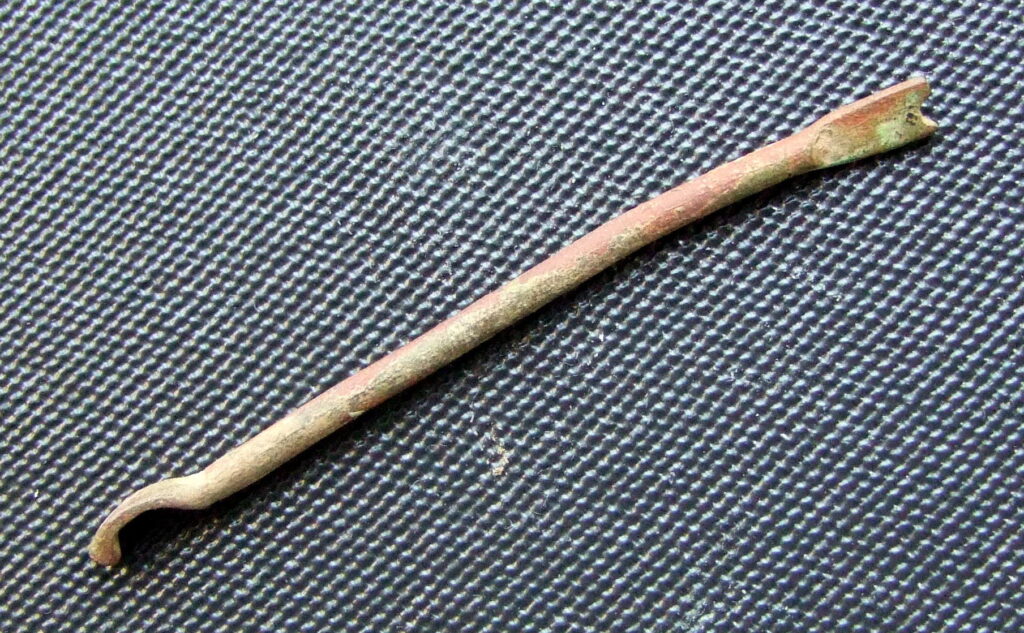
Roman ear wax scoop. Possibly from a manicure set.
Contributor A.

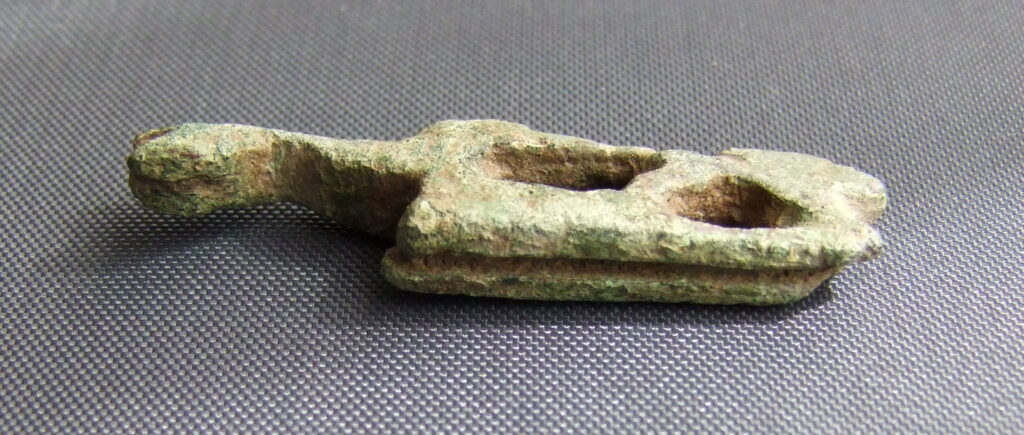
This is a Romano-British (1st to 4th century) handle from a folding razor.
It shows a stylised dog seizing a hare and has a groove in its flat base where the blade would have been. It is 48 x13mm.
The contributor is anonymous.
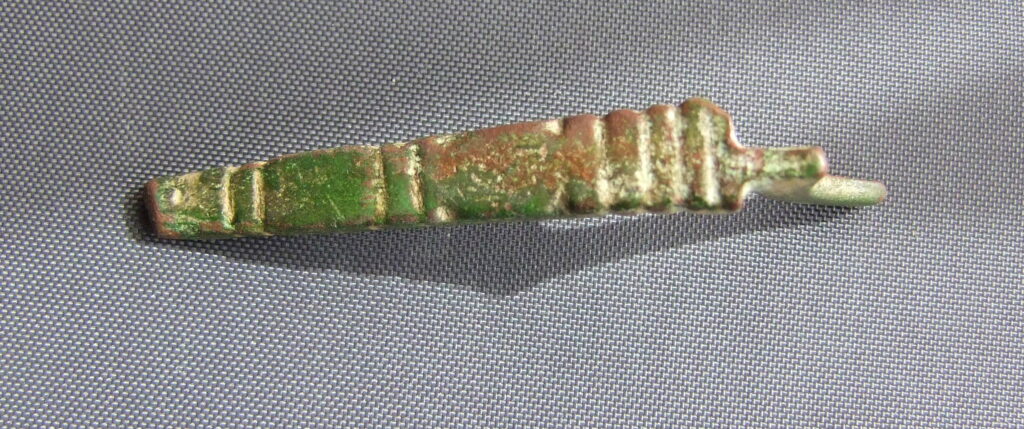
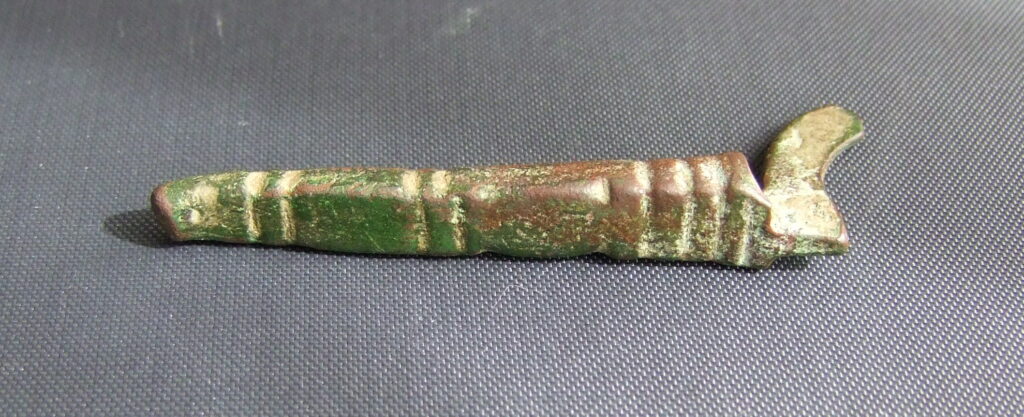
Fragment of a large Roman spoon.
A rectangular section of a handle tapering towards a bent broken end (width 8.5 to 5mm, thickness about 5mm).
It has a large, narrow, curved broken section offset where the missing bowl would have been.
There is decoration on the upper face and sides comprising of four transverse grooves, twin notches and twin engraved grooves.
It is 62mm in length.
Contributor A.
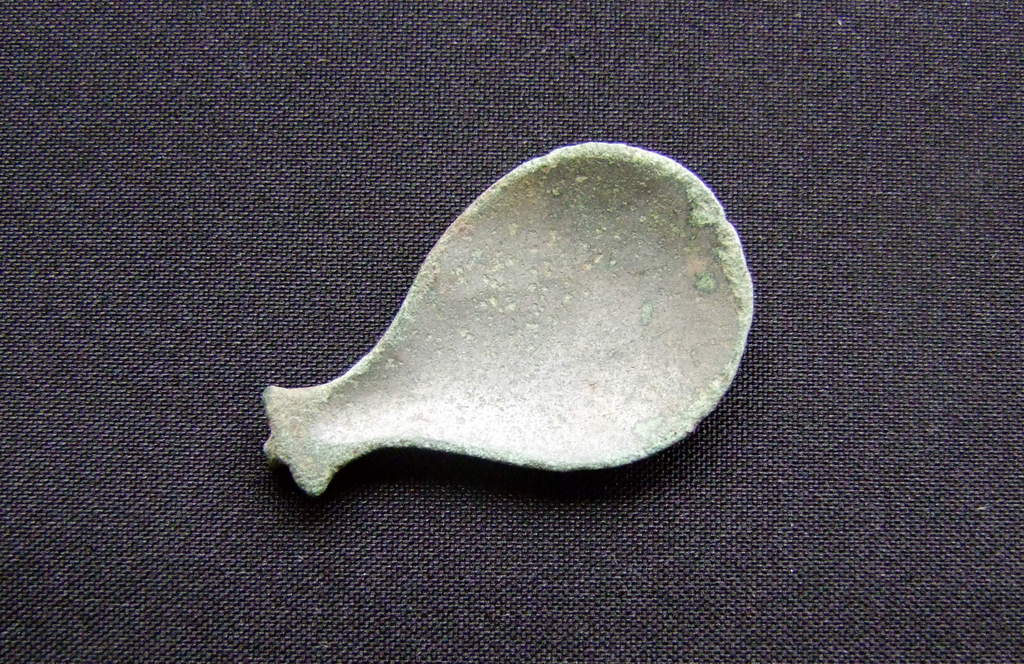

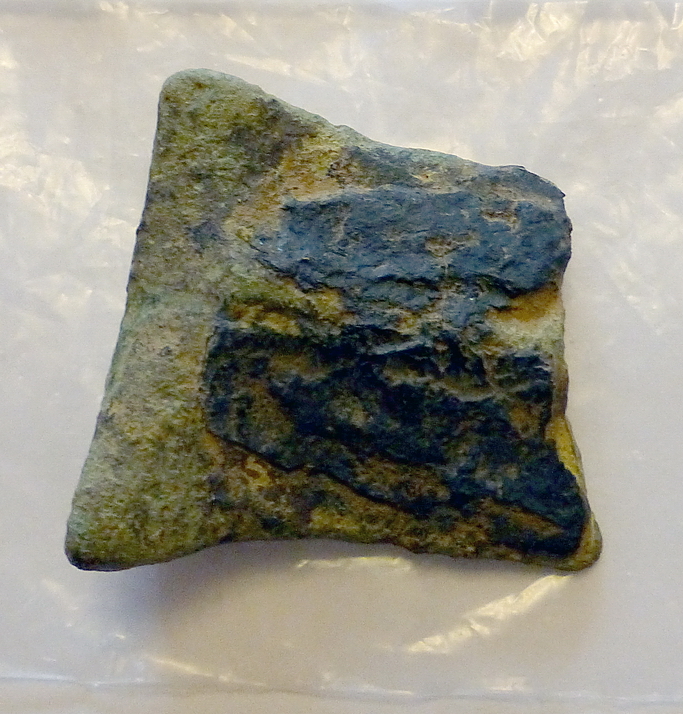
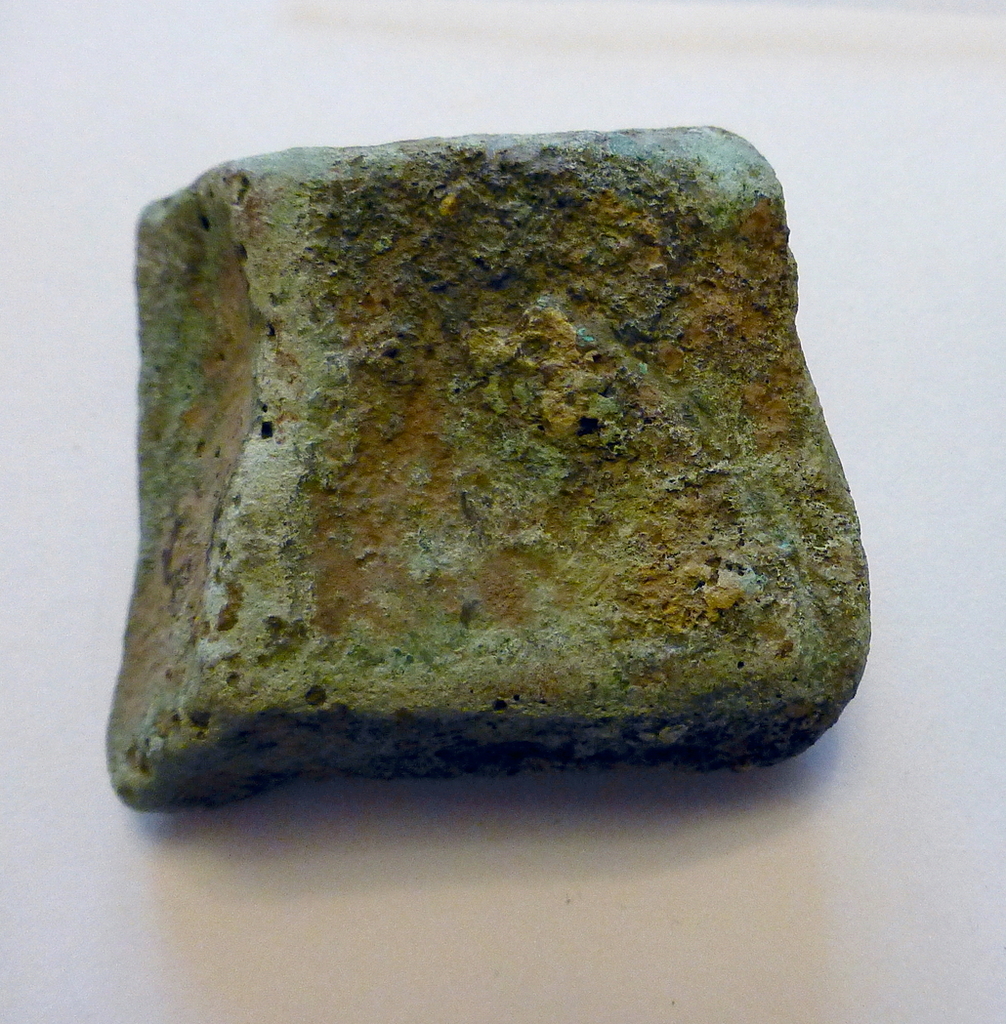
Both the above were contributed by Jean.




All the above were contributed by PD.

Even in the 3th/14th century it seems people wanted to keep things safe and lock them up. Here we have a large key from that period with a lozenge bow end.
Contributor A






Left – medieval purse frame.
Right – copper alloy strap end buckle.
Contributor A.

Another purse frame bar. 15th/16th century.
Contributor A.




Medieval spindle whorls.
A spindle whorl is a disk-shaped object with a hole in the center
and was used in the ancient art of making cloth before the spinning wheel was invented.
Contributor Jean.


Post medieval dress hook. Found in 2022.
The finder wishes to remain anonymous.